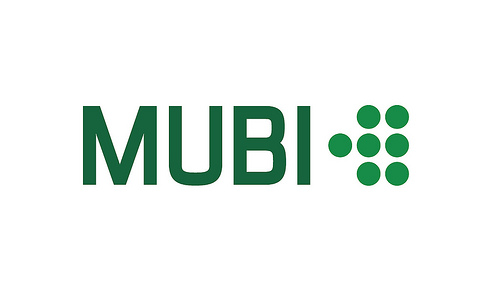A Fabulously Frightening Cinematic Spell: THE WITCHES as an Accomplished Children’s Horror Film
24 June 2012
Children’s horror is not a popular genre of film. When it comes to children’s films, animation/live-action, fantasy, and adventure are the leading sub-genres, and horror films are reserved for more mature audiences. True, children are not ready for blood and guts, or a number of other things that make up the average horror film, but what’s so wrong with scaring our youth at the movies? If you ask Nicolas Roeg, who directed The Witches, the answer would probably be…absolutely nothing. The Witches is a children’s horror film. And, importantly, it is not simply a horror film because the story it captures is scary; The Withes is a horror film because of the way Roeg captures the narrative, using calculated cinematic techniques.
Adapted from the Ronald Dahl novel of the same title, The Witches tells the story of a boy named Luke’s (Jasen Fisher) terrifying encounter with the witches of England. Luke’s grandmother, Helga (Mai Zetterling), opens the film by telling Luke of her own childhood encounter with witches. According to Luke’s grandmother, witches hate children, and make it their mission torture and kill all boys and girls. Shortly after learning about the witches, Luke’s parents are killed in an automobile accident and he moves in with Helga. Because Luke’s grandmother is a diabetic, she and Luke take a holiday at the Hotel Excelsior, a coastal resort in England, so Helga can recuperate from a spell of bad health. Helga and Luke’s stay at Hotel Excelsior coincides with a massive women’s league convention for The Royal Society for the Prevention of Cruelty to Children. This women’s league is, of course, a (witty) front for the witches of England, and the “convention” is actually their yearly gathering, lead by the Grand High Witch, Eva (Angelica Huston). As the witches hatch their plan to turn all the children of England into mice with a magical potion Eva concocted, Helga and Luke realize the witches are up to no good and devise their own plan to stop them once and for all.
There is no doubt Dahl’s story is terrifying, especially for children, his target audience. And, in adapting this novel for the screen, capturing a visual representation of Dahl’s descriptive narrative brings the fear to life. Whether it is the witches bald, toeless, deformed shape or the countless mice scurrying all over the Hotel Excelsior’s dining room, the visual images Roeg brings to life from Dahl’s novel are revolting, frightening, and disturbing. However, it’s not enough that the images be disgusting and horrifying; after all, the images are disgusting and horrifying to readers as they are reading, so what would be the point of adapting the novel for cinema if the film didn’t take Dahl’s terrifying tale to a new level. To create a successful film adaptation of The Witches, Roeg had to match Dahl’s ability to create fear with the written word with his own ability to create fear with a camera. Luckily for audiences, Roeg did just that. What makes The Witches a truly terrifying children’s horror film is not the images presented; The Witches is a terrifying horror film because of how the images are presented: Roeg’s exaggerated use of shaky camera, point of view shots, and Dutch tilts (angles). These cinematic techniques brew together to create relentless instability, disorder, and chaos.
The first of these techniques, shaky camera, is also known as the hand-held camera technique. Typically, this technique is known for enhancing realism, in part because the camera moves with a freer range of motion. Additionally, if used frequently, shaky camera can also make the audience feel a bit nauseous, as the camera generally, well, shakes without any stability. In The Witches this technique is effective. While Roeg does use shaky camera a lot, he interrupts his use of this technique with standard, stabilized camerawork. Because the audience does not view the film through a shaky camera for too long a period of time, Roeg does not risk giving his audience motion sickness, but does manage to disorient viewers. Roeg’s use of shaky camera also emphasizes realism in the film. Because Luke often finds himself on the run from the witches, the shaky camera technique creates the feelings of confusion and panic for viewers, which align with the feelings Luke experiences in the narrative; this pulls the audience deeper into the film.
In addition to shaky camera, Roeg uses point of view shots to continue increasing the realism and unease he attempts to create in The Witches. With a point of view shot, the audience takes on the perspective of a character in the film, and this, too, is a classic way for a filmmaker to up a film’s realism. If viewers take on a character’s perspective, the audience, essentially, becomes a character in the film. Point of view shots break the fourth wall, meaning the characters interact with the audience, by staring straight at them and talking directly to them; therefore, the audience does not have the luxury of omnisciently gazing upon the characters and their actions. With the fourth wall broken, audiences will naturally feel more invested in the film. And, with a horror film, like The Witches, the audience’s fear will be heightened because they, in taking on the perspective of a character, are exposed to the same violence and chaos that character is subject to.
Lastly, Roeg frequently uses Dutch tilts (angles) in the film. Most often, Dutch tilts—which are intentional tilts of the camera to capture images on a diagonal—represent disorder. When filming from a tilted angle, a filmmaker is often attempting to convey instability, or express that something is out of sorts. Often times these shots are static, meaning the camera does not track or pan while filming from this tilted angle. While Roeg’s use of shaky camera and point of view shots increase The Witches realism, the Dutch tilt is a contrastingly unrealistic shot. Thus, the audience is constantly being pulled into the film, and then thrown out. Theoretically, the audience is on a rollercoaster ride in The Witches, and Nicholas Roeg, the ride’s operator, is jerking the audience around through his presentation of images. In this context, the Dutch tilt opposes Roeg’s use of shaky camera and point of view shots; however, the contrast creates even more havoc within the film, which clearly works for The Witches. 
Not only is Roeg controlling what the audience sees and how viewers see it, he is also controlling the speed at which the audience must bear witness to these images. During climactic moments, Roeg cuts rapidly, and, in doing so, shifts just as rapidly between Dutch tilts, point of view shots, and shaky camera. Each of these techniques creates a frightening and chaotic feeling for the audience when they are used respectively, but when Roeg uses the techniques in rapid succession The Witches floods with anxiety and terror.
In all, The Witches is a successful cinematic adaptation of Dahl’s novel. This has nothing to do with the film’s adherence (or lack thereof) to Dahl’s narrative, but is entirely based on Roeg’s effort as filmmaker to create the fear in his movie-going audience, using cinematic techniques, that Dahl created in his literary audience, using language. Because The Witches is a children’s film, Roeg gets away with such a large amount of shaky camera, point of view shots, and Dutch tilts. If this film had been targeted for adults Roeg may have been criticized for recklessly overusing these techniques; however, children’s film are typically more exaggerated in style and content to satisfy the demands of younger viewers. And, without question, The Witches satisfies the desires of the youngest horror movies seekers.

















[…] (The picture of the mustard witch was found at the blog reel club, click this sentence to see what t… […]
A Book, A Movie, And A Drinking Game! The Witches | Sweet n Sour Reviews said this on 07/06/2014 at 1:09 AM |